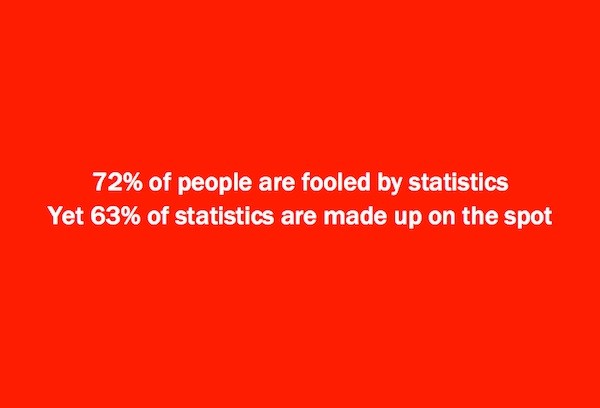A significant component of our marketing management work is assessing and benchmarking the value of our client’s marketing investments. This budget is spent with a range of external suppliers.
These external suppliers include advertising, digital, and media agencies, as well as thousands of other suppliers competing for a share of the marketing budget. These suppliers can include everything from printers and merchandising providers to market researchers and software providers.
However, much like the industry discussion on whether marketing is an Art of Science or if the Math Men are replacing the Mad Men, the truth is the TrinityP3 methodology uses qualitative and quantitative approaches to provide the insights our clients require.
This allows them to understand better how well their marketing investment is performing and where and how to improve their return on investment.
The Quantitative Approach
While we hear that much marketing consulting is simply opinion, one of the hallmarks of the TrinityP3 methodology is our use of financial modelling, analysis, and benchmarking. This quantitative approach is applied across all of our services, including marketing transformation, agency rosters, agency commercial arrangements, media value, and production.
The financial approach to remuneration includes not just cost but also the quality and quantity of the resources, along with the mix and resource utilisation. This allows us to make detailed analyses of current arrangements and, equally as important, provide detailed analysis to inform the decision-making process in a pitch or tender beyond simply cost.
The detail and depth of this analysis and the insights it provides often genuinely surprise our clients the first time they work with us. However, it is incredibly difficult to demonstrate the process’s outputs, as beyond the issue of confidentiality, the results are often meaningless unless you understand the situation or circumstances that are being analysed.
Of course, the numerical basis of financial arrangements makes it evident as the basis of a quantitative analysis. However, as mentioned, we have developed specific methodologies beyond costs to provide quantitative analysis of sources across various marketing, advertising and media functions.
This approach is so important to us because it allows TrinityP3 to assist our clients in making more informed decisions. The analysis across categories, disciplines, and markets provides us with critical insights into the broader market trends.
The Qualitative Approach
However, we also understand marketing is more than money and resources. Innovation, strategy and creativity are essential tools in the marketing process. My personal 15 years as a copywriter and creative director inform our approach. This is why we do not rely on quantitative analytics alone.
To achieve this, we engage with key stakeholders inside the marketing team and organisation, outside service providers, and suppliers. This takes a structured and unstructured approach through surveys, interviews, workshops, and discussions.
One of the key insights we have found is that there is often a difference between the qualitative findings and the quantitative results. One area is when we are benchmarking agency resources and remuneration.
It is common for the agency team to talk about the most recent issues of miscommunication or mistakes, believing that this will support an increase in the number of agency hours, for us to find that, in fact, there is no inflation in the agency resources required.
Likewise, marketers often believe that agencies are understaffed or underresourced, leading to the belief that the agency is either underperforming or overcharging. Yet the quantitative analysis will show that the agency has exactly the right level of resourcing for the scope of work delivered.
The issue here is due to perspective and framing. Often, agencies respond to either the marketers’ casual feedback or are influenced by the most recent circumstances. The marketers are responding to the fact that they rarely see the whole agency team and judge agency performance based on the account team and their communications with the client.
Despite the lack of alignment between the qualitative and quantitative analyses, the differences are also insightful for both the agency and the marketers.
Quantifying and Qualifying
For those familiar with structured and unstructured data, we work with both. Even when collecting opinions, feedback, and beliefs, we have designed and developed techniques to provide structure to the unstructured data to allow analysis and minimise consultant bias.
This is a major issue when the consultant relies on opinion and subjective analysis alone, as they bring their biases and perceptions based on past experience to the project. It is also difficult to address when the consultant is working alone, as they have no alternative perspective provided by working with a colleague or partner who can challenge their assumptions, biases, and misconceptions.
Even when a single consultant works on a TrinityP3 project, we have a peer review process to minimise the effect.
Collecting the narrative, identifying the issues, and then prioritising them is important as it allows us to identify the priorities of each stakeholder group. Differences in the magnitude and frequency of the issues and the priorities in addressing these issues mean that we can assess where the most significant benefit can be delivered.
Even when we undertake what is primarily a quantifiable analysis, such as agency remuneration, we ensure we then test the financial findings through discussions with the agency and marketing team to provide context.
We have found the numbers will provide a very clear understanding of what has happened or is happening, from which we can, at best, hypothesise the causes. However, we can probe these hypotheses with very direct discussions to understand the underlying cause.
We have often found that agencies and marketers prefer to provide qualitative discussions first before we undertake the quantitative analysis. This can certainly be accommodated, but we have found that it often covers territory that is either irrelevant or minor.
It is more efficient and effective to undertake the quantitative analysis first and then use this to inform the qualitative discussions.
Two Approaches Improving One Outcome
Interestingly, when we initially proposed this two-stream approach, some marketers were concerned that it would be protracted and costly. Instead, they often want to jump straight to the solution. However, our experience has been that time and cost are relatively insignificant when delivering the right solution.
The problems and issues we address impact more than the cost of the agency; they impact the overall performance of the marketing.
- The transformation of the marketing function through the selection and implementation of the right technology platform
- The alignment of the agency roster to optimise the performance of the entire roster,
- The implementation of a media agency contract that ensures transparency and performance,
- The development of an accountable and high-performance in-house resource, and more.
Marketing is a combination of science and art, strategy and creativity. Therefore, the approach we have developed to analysing and managing marketing performance uses the same two-stream approach of qualitative and quantitative analysis to deliver solutions to improve performance.
As the saying goes, “Everyone has an opinion,” but when you want to solve a problem or issue, you need more than just another opinion.
Learn more on how TrinityP3 is different and why this matters when developing sustainable and long-term solutions to marketing management challenges and issues.



